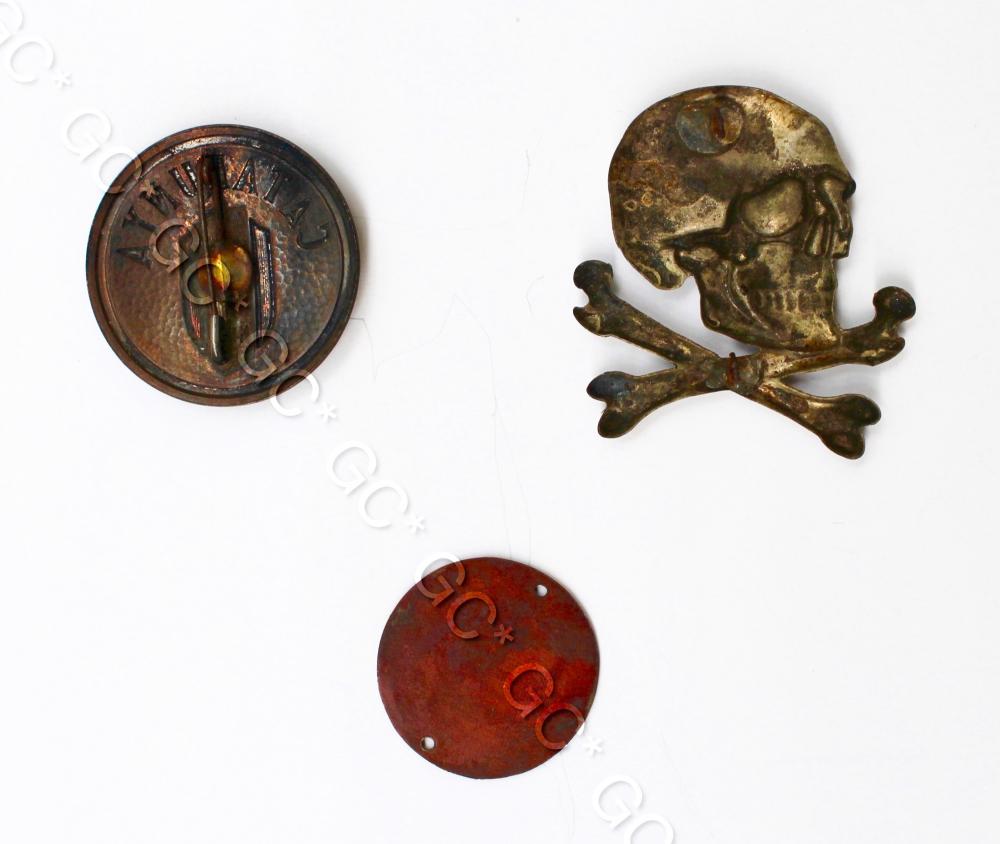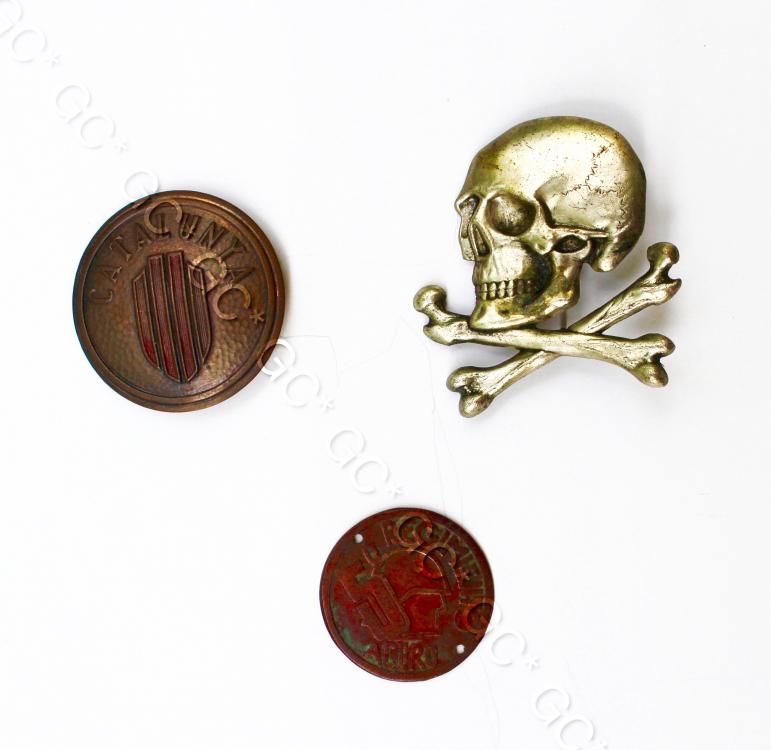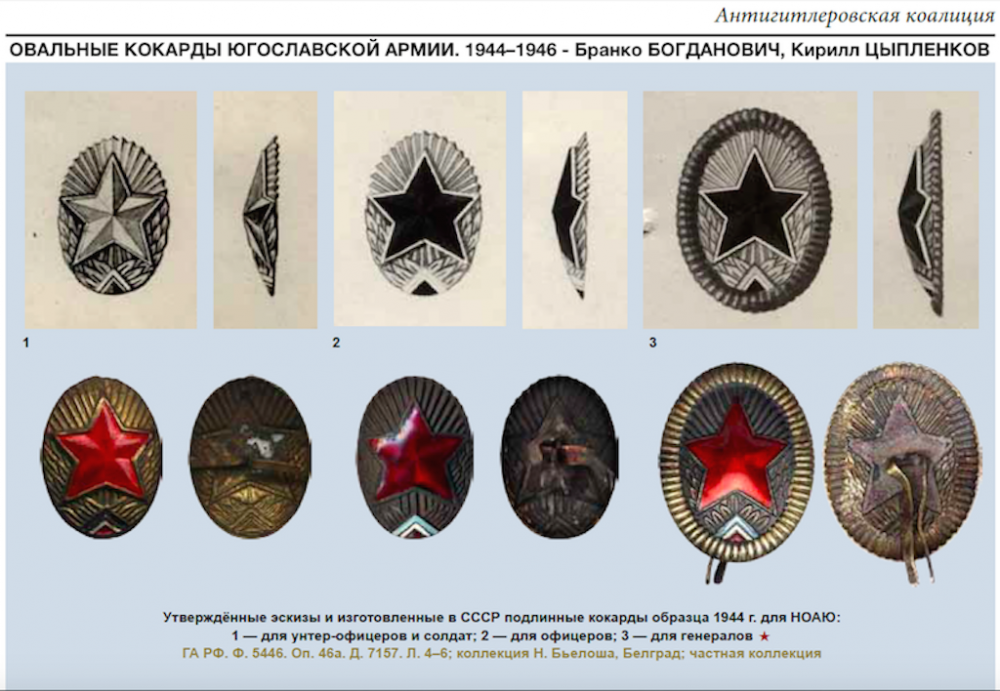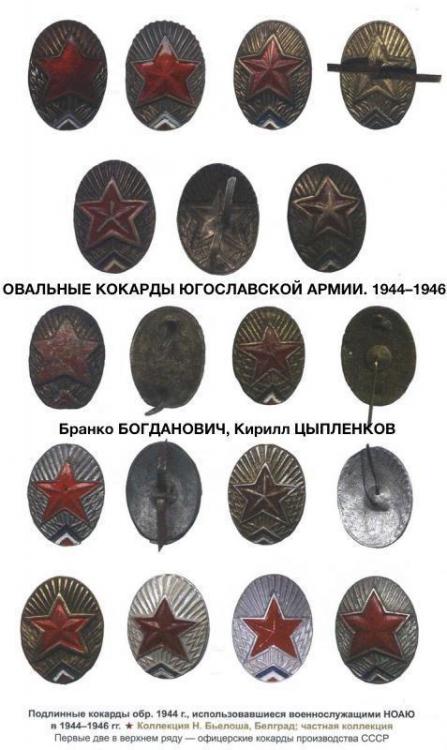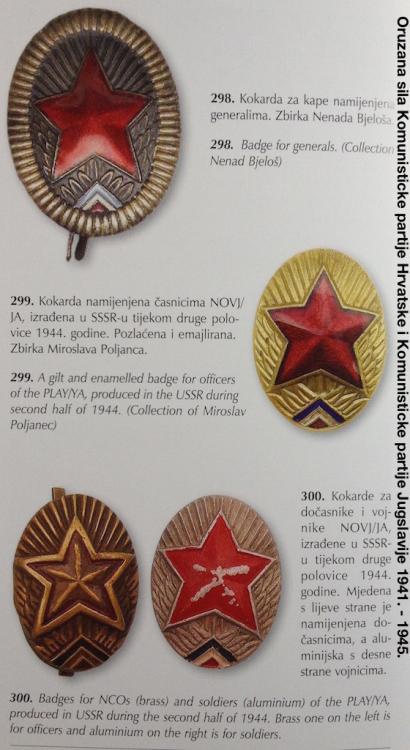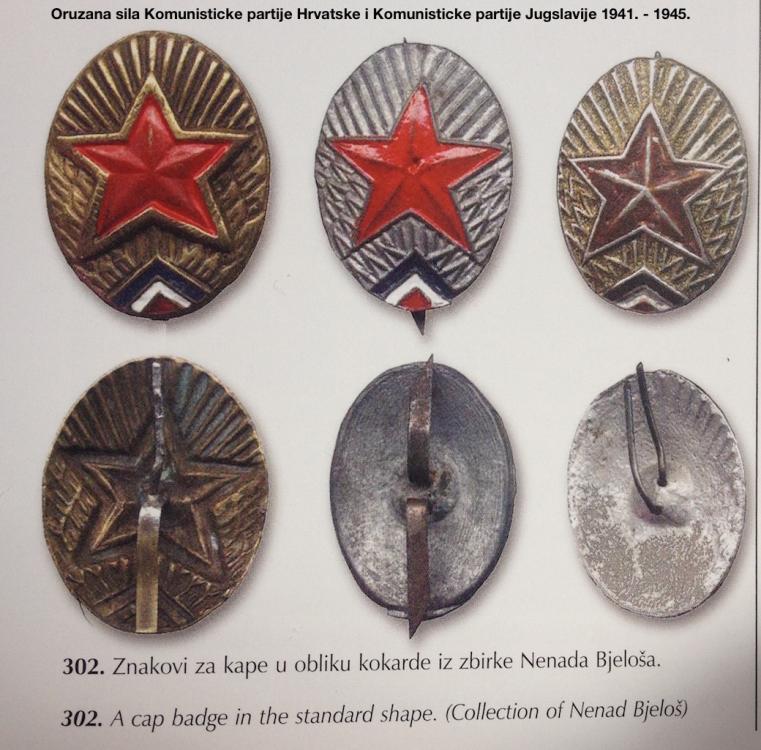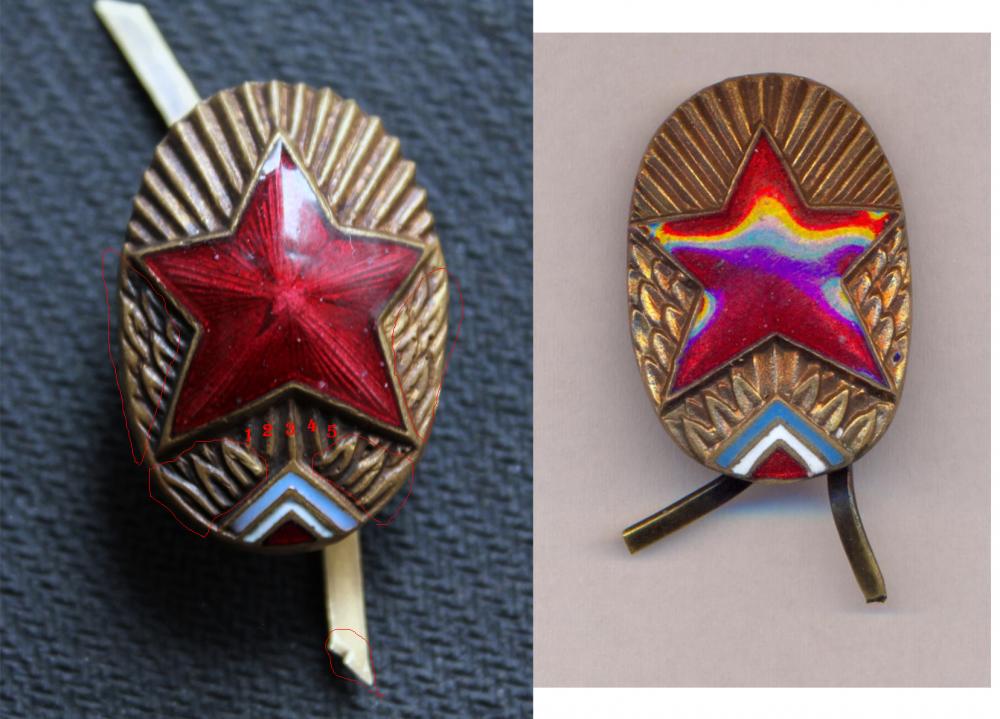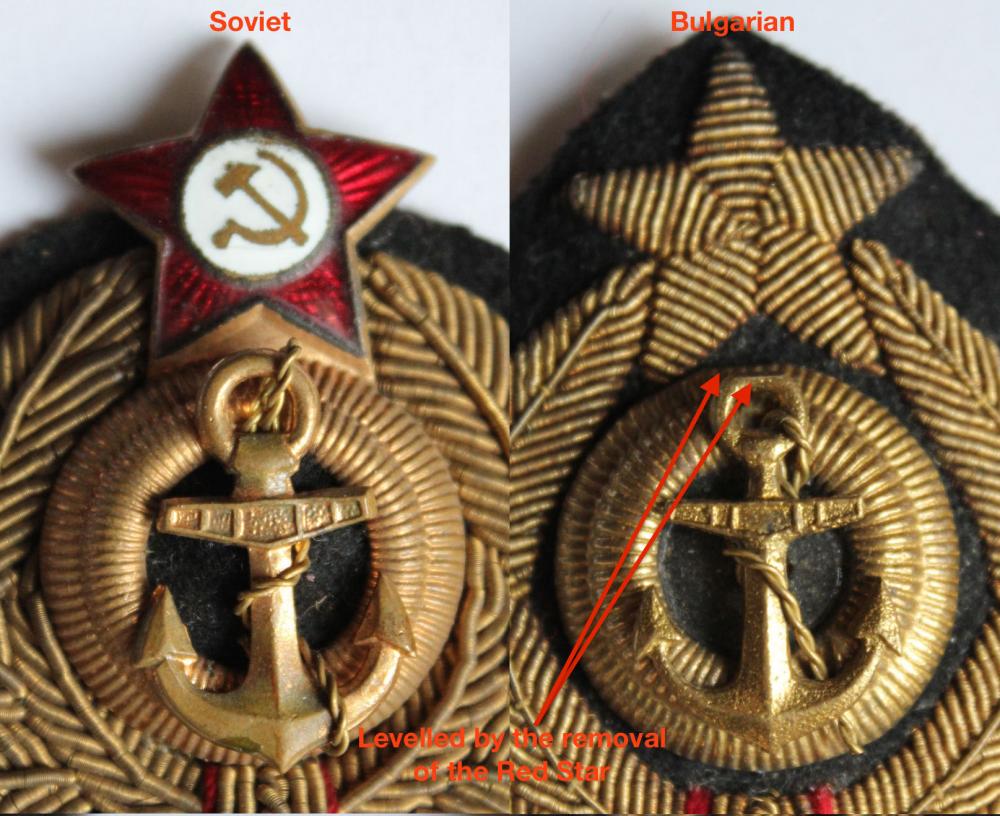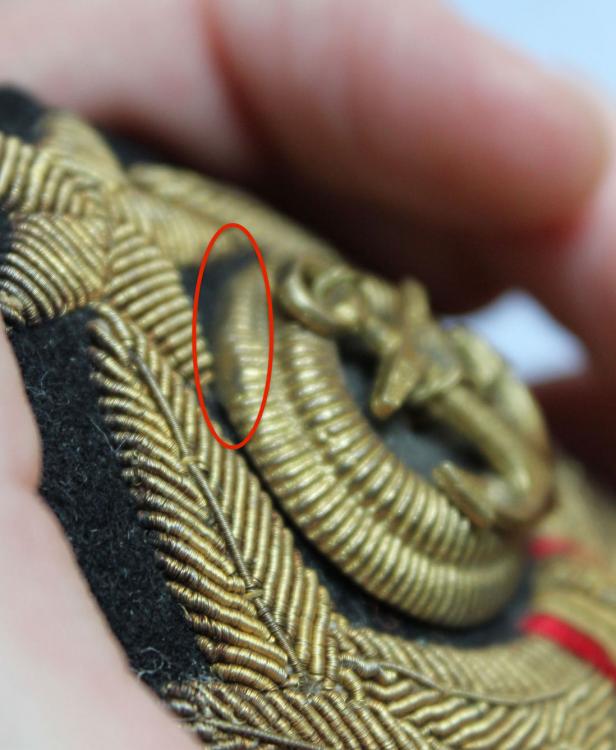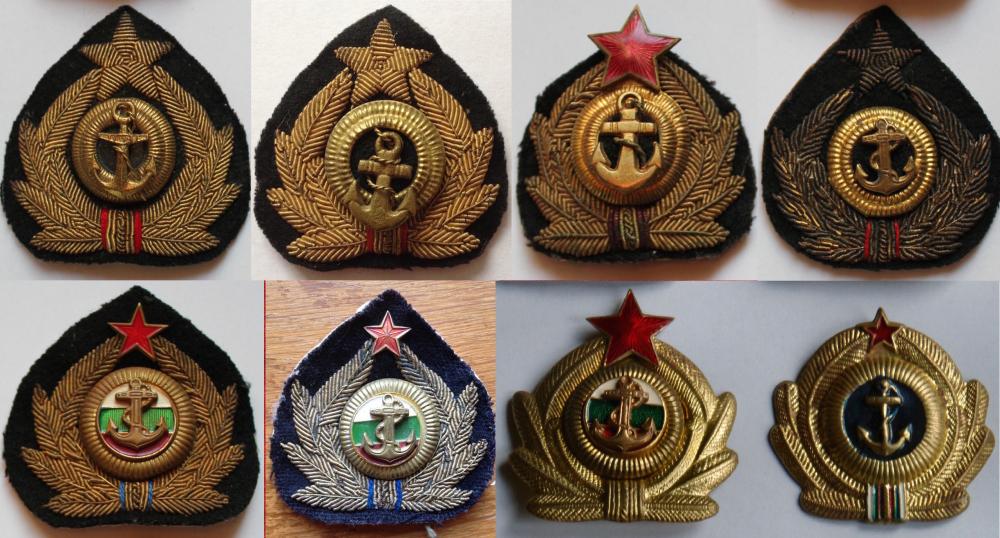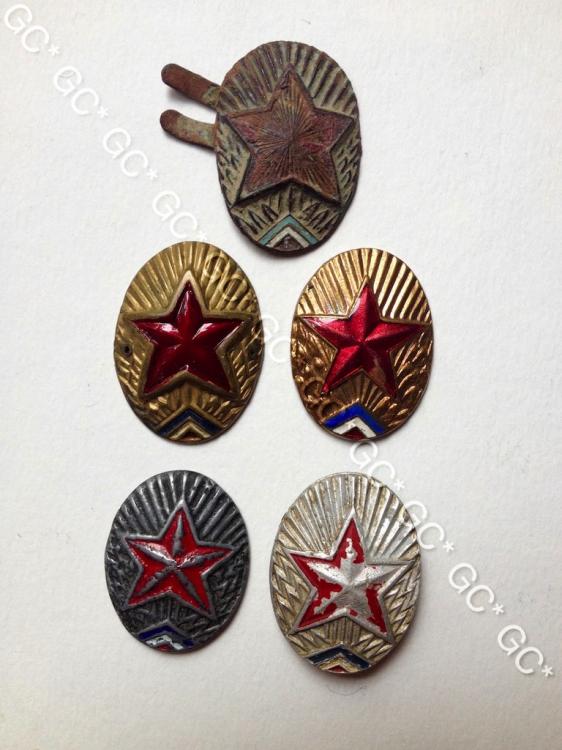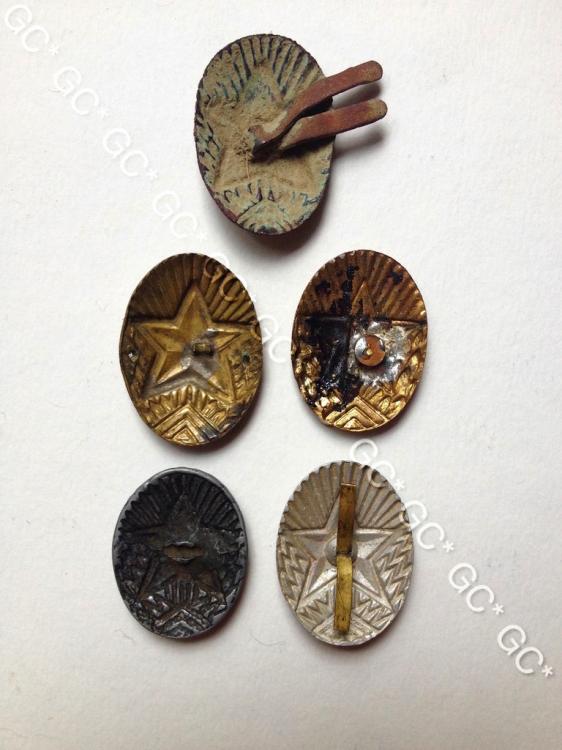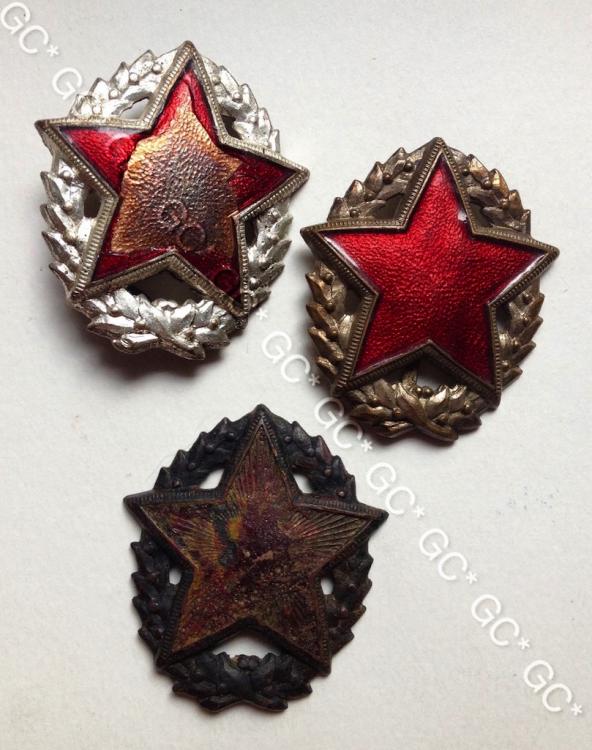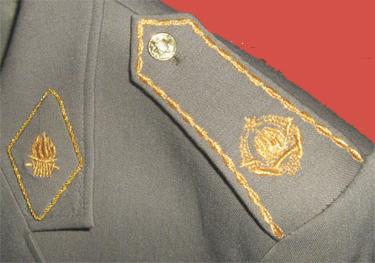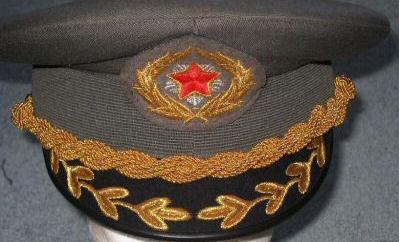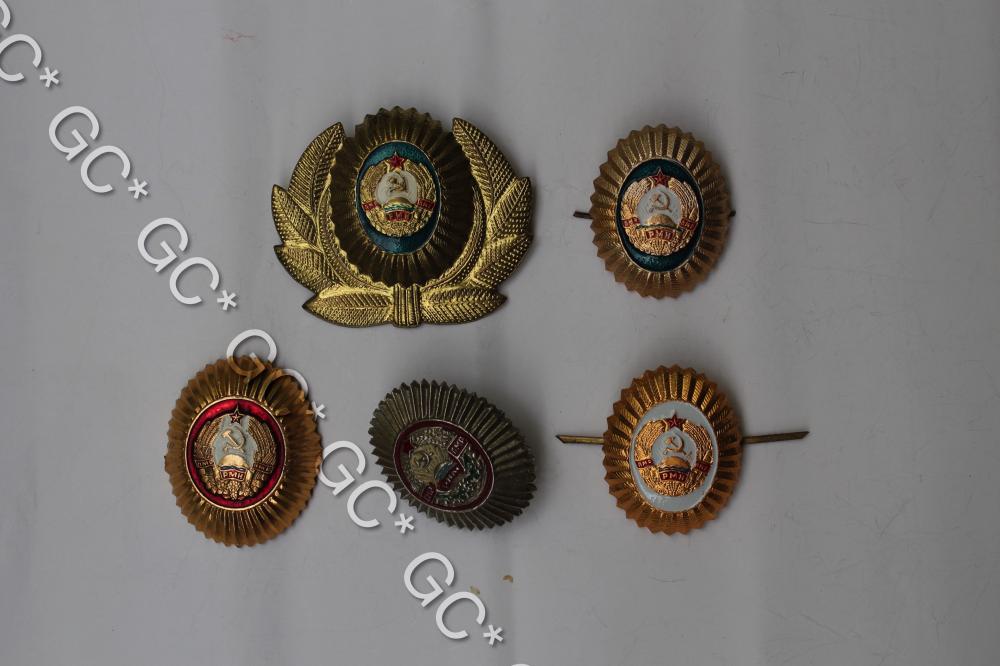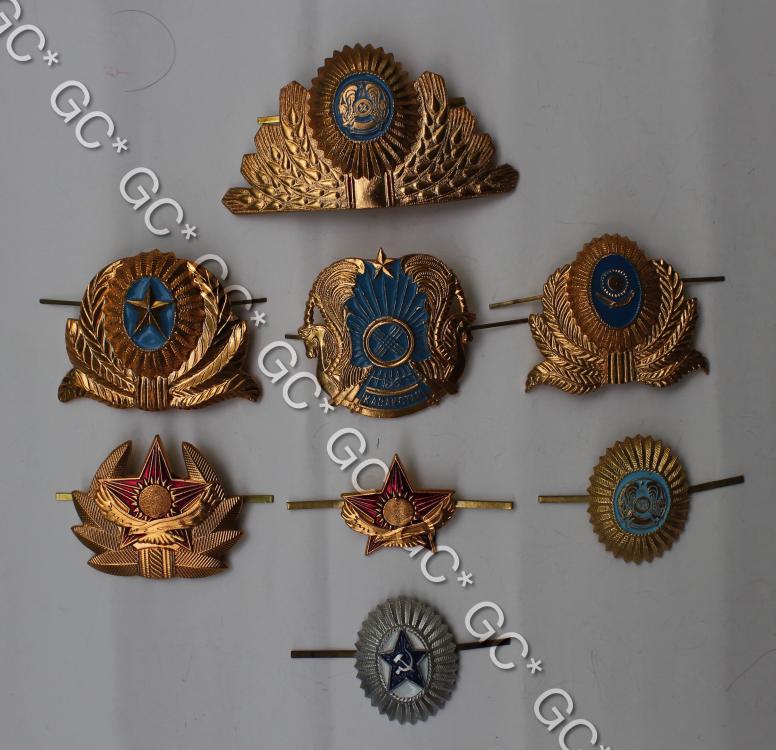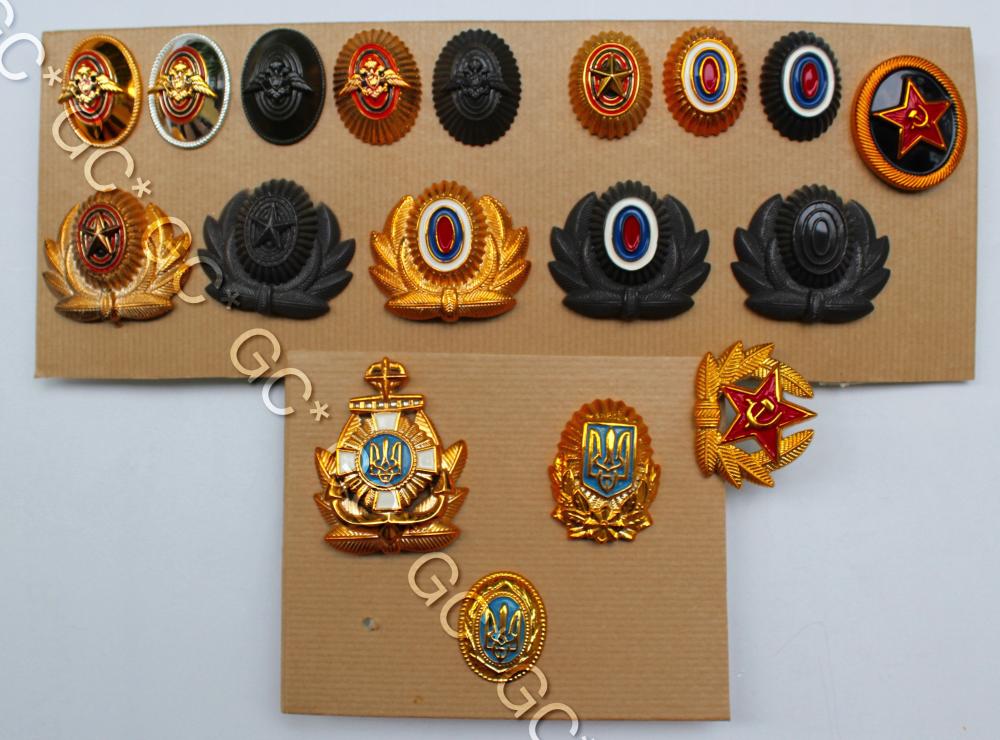-
Posts
123 -
Joined
-
Last visited
Contact Methods
-
Website URL
www.rkka.it
Profile Information
-
Gender
Male
-
Location
Italy
-
Interests
I am mainly a collector of Communist era hat badges: USSR, Warsaw Pact countries and various former Socialist-inspired countries around the world (South Yemen, Sirya, Lybia etc) as well as of post-1991 hat badges from CIS countries (mostly the Russian Federation).
I also collect USSR and post-Soviet Guard's badges and various types of antiquities-memorabilia from the former Soviet Bloc.
Finally, I am also a collector of Italian and Austro-Hungarian WWI relics I personally hunt on the battlefields in North-Eastern Italy.
GC*'s Achievements
-
Dear all, here I come today with a recently acquired piece that sparked my interest. I unfortunately had missed an auction for two communist period Hungarian embroidered flotilla cap badges. Meaning however that I had clear in mind how those look like. When this cap badge came up for auction listed as "Italian WWII" I knew for a fact that not to be the case. Here it comes: I had immediately anticipated this to be the result of "bricolage" work, as the winged cloth badge is clearly a Nazi Luftwaffe one. Upon receiving the badge I clearly ascertained the fact that anchor and Hungarian tricolours were sewn onto the winged badge. Circled in red the most evident seam. Why did I expect this to be related to post-war Hungarian flotilla forces? Here's the reason! These are two visors belonging to said river force: I would go as far as to say that it is pretty certain the anchor and tricolours from my bricolage badge come form a variation of the badges mounted onto these visors. I have also researched pre-socialist period Hungarian royal flotilla uniforms. And found evidence that at that time badges assigned to this force were very different from those later introduced after 1945: ù Now of course the issue is..why is the red star missing from my "bricolage" badge? In later periods Hungarian flotilla forces adopted a visor with the customary round cockade with tricolour and star in the lower part of the cap, whilst in the upper one regulations placed a wreaths and anchor cloth badge (embroidered at first). So I believe the anchor and tricolours from my badge belong to an early post-war era. Am I to assume a flotilla officer felt the customary badge was not fancy enough and took it upon himself to embellish it? Do you generally agree with me placing this badge in the post-war period (I'd say roughly 1946-late 1949)? Cheers! GC
-
A section of my collection I am particularly proud of is the one devoted to cap badges used by the Republican side in the Spanish Civil War. Those used by the regular EPR (People's Army of the Republic) are much easier to get than the ones adopted by the CNT, UGT, POUM etc. militias. The design dates back to before the institution of the First and Second Republics and for these reasons many cap badges displayed here were simultaneously used by the Republican and Nationalist sides. Some cap badges, such as the one for the Naval Infantry or those of the Cuerpo de Seguridad y Asalto were produced with different designs by the Republic, but when it comes to Infantry, Cavalry and Artillery, the same cap badges (actually available in amultitude of variations) were used by both sides. What immediately identifies a cap as a Republican one is the customary red star (once again produced in very many variations) which became the logo of the EPR in 1936 (year in which the Army itself was renamed People's Army). Here comes my collection: Let me now provide a explanation for these pictures: Starting from above we find a beautiful wings badge displaying the red star (pre-war ones were missing it). This model was used on cps, but badges with the same design were also used as breast badges and collar insignias. Let us now look at that huge mass of metal lying under the wings. Starting from right we find artillery cap badges. Worn both on Gorra and Gorrillo (visor and side cap) these were differentiated by the detail on the grenade. Those that presented that concentric spirals were used by Officers, the others by NCOs and soldiers. Right under the artillery badges we find red stars, which we'll look at more in details afterwards. Let us now move on the left of the artillery cap badges, to the Cavalry ones. Beautiful and complex design for these ones. Once again, different models and prongs' structure. I am not sure whether the smaller one was worn on Gorrillos or as collar insignia.. Just under the cavalry badges we find the towers of the famous Cuerpo de Ingenieros, the one celebrated in the famous song El Paso del Ebro. The smaller one was used both as collar tab and as Gorrillo cap badge. Under the towers we come across some interesting looking stars which were used by the army before it adopted the red star and clashed with Franco's insurgents. In fact, these stars were widely used by the Republican militias in the initial phases of he war, when the last worry of the Republic was the production of cap insignias.. Let us now move to the left of the cavalry badges, where we encounter the infantry ones. Lots of designs available for these traditional cap badges, which design itself was adopted during the Monarchy and is still in use. Once again, not sure whether the smaller infantry badge was worn on Gorrillos or uniform collars. Just under the infantry cap badges we find on the right a wonderful cap and collar badge of the Cuerpo de Seguridad y Asalto. The C and S stand for Cuerpo de Seguridad, the shortened version of the unit's name and both were surmounted by the Republican crown. The unit was basically a sort of national armed police tasked with countering internal attempts at overthrowing the Republic. On the left of the Cuerpo de Seguridad badge we find two crossed rifles, the cap badge of the Cuerpo de Carabinieros a.k.a. the border troops of the Republic. Under the crossed rifles we find another "crossed" badge..this time however we find a saber and riding crop i.e. the logo used by General! Now, I am really not sure whether this was a cap badge, a collar insignia or anything else and anybody's help here would be much appreciated! Help would also be needed to identify the small Second Republic coat of arms badge that stands to the right of the Generals' insignia. The prongs on the reverse tell me it could really be a cap badge..but who wore it?? Finally, we move to the last column on the left side of the photo where we find a "calavera", skull, that was adopted by anarchist formations during the war even if it originally belonged to the Light Cavalry Regiment Lusitania, which fought on the Nationalist side. Right under it I put a wonderful badge of the notorious 5th Regiment, formed by the Communist Party. Then comes a beautiful badge/cap badge worn by volunteers from Catalonia and by the Ejercit Populat de Catalunya (the Catalonian army affiliated with the central EPR). Finally, a rose-cut cap badge made of paper and cloth, displaying the Republican colours! Now, let me show you more in detail the red stars as well as the Catalonian, anarchist and 5th Regiment badges! I hope this was appreciated and anybody's comment or suggestions would be more than welcomed!
-
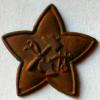
My collection of Bulgarian cap badges, 1944-1991
GC* replied to GC*'s topic in Central & Eastern European States
Any contribution is more than welcomed! As you can imagine, due to the very limited scope of my collecting (USSR, Warsaw Pact, SFRJ cap badges), it is often difficult for me to engage in any debate at all with fellow collectors.. -

My Collection of Yugoslav cap badges, 1941-1991
GC* replied to GC*'s topic in Southern European & Balkan States
I entirely agree with Tim that if any of the three cap badges I posted as dubious/fake is indeed fake (and imho at least the first and the one on blue cloth are [I fully agree with you Paja]), then we are facing a quality that is unknown to most attempts at producing fake Soviet cap badges (in fact a rather high quality production of fake Soviet M1922 and M1936 stars has started and quickly reached a frightening good quality, but so far these are sold as replicas and not passed off as original Civil War or WWII). I have been observing these a lot and at first I thought that only the badge on red cloth featured a bas relief-like star construction underneath the enamel, but in fact all three stars seem to have rays that from the point of the stars arrows converge to the centre. The main issues with these cap badges for me remain: 1) the number and structure of leaves in the lower part of the badge. 2) the shape of the star itself (too asymmetrical) I say so after having observed all cap badges listed as original in the two publications I quoted in one of my previous posts. Here come once again the titles: 1) "ОВАЛЬНЫЕ КОКАРДЫ ЮГОСЛАВСКОЙ АРМИИ. 1944–1946 - Бранко БОГДАНОВИЧ, Кирилл ЦЫПЛЕНКОВ" (Oval Cap Badges of the Yugoslav Army, 1944-1946 - Branko Bogdanovich, Kiril Ziplenkov) 2) "Oruzana sila Komunisticke partije Hrvatske i Komunisticke partije Jugslavije 1941. - 1945. - Tomislav Aralica, Viseslav Aralica" (Armed Forces of the Croatian Communist Party and Yugoslav Communist Party, 1941-1945 - Tomislav Aralica, Viseslav Aralica). As you'll notice, there is no agreement between the two sources about which partisan "egg" cockades were produced in the USSR and which in Yugoslavia. The Russian source lists fewer model, while the Yugoslav source more.. Both sources seem authoritative to me, but the Russian article, which specifically looks at the production of partisan "egg" cockades in the USSR, relies on rather rigorous archival research and seems more precise in identifying which "eggs" were produced in the USSR and which others in Yugoslavia. Here some scans. Would love to hear your opinion on this issue. -

My Collection of Yugoslav cap badges, 1941-1991
GC* replied to GC*'s topic in Southern European & Balkan States
Here they come! First of all, the original picture coming from that sister forum, which clearly shows the macroscopic difference between an original cap badge and the fake one. Now the photos of the two cockades put on sale on ebay some months ago.. Paja, what is your take on these? The one on red cloth seems to have a more convincing enamel, but still conforms to no proved original..and looks anyway almost identical to the cap badge in the first comparative photo, which we could imho safely assume is a fake. -

My collection of Bulgarian cap badges, 1944-1991
GC* replied to GC*'s topic in Central & Eastern European States
An interesting partisan award Tim. This type of badges (together with Czechoslovak ones) always attracted me, but I have since long sword a sacred vow to confine myself to collecting cap badges (which drain my finances well enough already..). Dear Theodor, here I come with come questions about Bulgarian navy cap badges. First of all, I'd like to submit to you my theory about a quite particular cap badge, which I believe is the result of the addition of a Soviet anchor onto a Bulgarian embroidered patch. Let me now show you the patient. Despite the similarities between many Bulgarian badges and their Soviet counterparts, this embroidered patch is most definitely Bulgarian. Now I show another cap badge displaying what I believe to be the correct (Bulgarian) anchor. And now, let me show you why I believe the first badge shown above to be a "collage" construct. In a nutshell, I believe a Soviet anchor-star badge has been emasculated of the red star and applied onto the embroidered patch (for reasons clearly entirely unknown to me..). Here the proofs. In the first picture you'll see on the left a typical Soviet post-war Navy cockade of the 1950s type (metal wire tied around the anchor and enamelled star) and on the right our mysterious Bulgarian "collage" badge. I have highlighted on the Bulgarian badge where I believe one can clearly recognise the levelling of the metal oval and of the anchor's upper part, as a result of the star's removal. Let me now show you a (rather poor quality..) picture of the Bulgarian badge where I highlighted the area where no milling is visible (once again as a result of the star's removal). What do you think about this theory of mine? Finally, allow me to take advantage of your knowledge and to ask you whether you have any idea about how to date these Navy cockades? I've seen the multi-piece construction metal one (second row from top, second from right) used by Bulgarian naval infantry, but I have been unable to find any other photo that could clarify me when these cap badges (and most of all those in the first row) were used. Here they come! Thank you so much! -

My Collection of Yugoslav cap badges, 1941-1991
GC* replied to GC*'s topic in Southern European & Balkan States
Thank you very much! I've read that post too and have attentively followed the discussion. I myself am absolutely convinced that the cap badges you posted is a modern replica. It is a remarkably well-made one, but several macroscopic differences would alert any expert of Yugoslav partisan cap badges. I've seen at least two different ones going unsold on ebay for quite a price.. -

My collection of Bulgarian cap badges, 1944-1991
GC* replied to GC*'s topic in Central & Eastern European States
Thank you so much for your informed answer dear Theodor! The red paint star's crude and quite old looking red paint must have misled me into thinking this was an earlier version of the enamel and later plastic enamel/paint ones.. Thanks for clarifying this! Your information on the green star are very interesting indeed! I should have thought of this myself, since I am an avid collector of German-made reparation cap stars.. It seems perfectly plausible that Bulgarian workshops and firms produced cap badges of this sort and buttons for Soviet troops. Since you are so well informed about Bulgarian cockades, I'll get together some decent close-up scans of the navy cockades which I'd love to discuss with you. I have many theories and no certainty about those.. -

My Collection of Yugoslav cap badges, 1941-1991
GC* replied to GC*'s topic in Southern European & Balkan States
As previously announced, I've been lucky enough to add some few pieces to my 1944-1948 Yugoslav section and I thought I would be interesting to update this thread. Here comes M44 partisan "eggs". I still have some trouble properly cataloguing these. The sources I use in my endeavour are: "ОВАЛЬНЫЕ КОКАРДЫ ЮГОСЛАВСКОЙ АРМИИ. 1944–1946 - Бранко БОГДАНОВИЧ, Кирилл ЦЫПЛЕНКОВ" (Oval Cap Badges of the Yugoslav Army, 1944-1946 - Branko Bogdanovich, Kiril Ziplenkov) "Oruzana sila Komunisticke partije Hrvatske i Komunisticke partije Jugslavije 1941. - 1945. - Tomislav Aralica, Viseslav Aralica" (Armed Forces of the Croatian Communist Party and Yugoslav Communist Party, 1941-1945 - Tomislav Aralica, Viseslav Aralica). Both sources seem authoritative, but the Russian article, which specifically looks at the production of partisan "egg" cockades in the USSR, relies on rather rigorous archival research and seems more precise in identifying which "eggs" were produced in the USSR and which others in Yugoslavia". According to that article, among my "egg" cockades only the first one on top belongs to those provided by the USSR to Tito's partisans. The Aralicas' book on the contrary would identify also some other "eggs" of mine as Soviet production. Anybody has knowledge of how to resolve this cataloguing problem? If it interests the memebers of this discussion, I can happily post scans of both sources . Then come the more easily recognisable M46. I see to have troubles locating a cockade of this sort with the rays structure displayed in my broken one..not to speak of the M46 for Proletarian Units, a true dream! Then, about the Yugoslav Presidency's uniforms, a colleague on another forum provided these interesting photos, which seem to display the epaulettes you posted dear paja as well as a cap adorned with the patch badge I showed earlier. What is your take on these? -

My Collection of Yugoslav cap badges, 1941-1991
GC* replied to GC*'s topic in Southern European & Balkan States
Thank you very much dear Paja and very nice talking to you again! Concerning the Generals' cloth badge, the information I have tells me that this belonged to the war uniforms of the Yugoslav Presidency, which after Tito's death became the supreme commander of the JNA. Needless to say, such uniforms were never used. -

russian federation My collection of Russian and CIS cap badges
GC* replied to GC*'s topic in Russian Federation
You are too kind! When it comes to Russia, although I think I've done my homework properly, I still miss a few pieces and all the early 1990s transitionary ones. Yet, I'm still short of very many when it comes to other CIS nations. The fact is that these don't come for cheap at all and I have quite a problem with purchasing current say Belorussian cap badges for higher prices than the ones I pay for original Cold War or even war-time pieces! -

russian federation My collection of Russian and CIS cap badges
GC* replied to GC*'s topic in Russian Federation
Dear Paul, thank you so much for your appreciation! Slowly but steadily I'll try posting all the different sections of my collection, which I finally managed to decently photograph. The Soviet and CIS sections account for more than half of my collection, but the effort I had to put into finding German pre-Nazi paramilitary cap badges or Spanish Civil War ones is hardly matched by anything else. I should be able to post the German 1920s-1930s badges today. -

russian federation My collection of Russian and CIS cap badges
GC* replied to GC*'s topic in Russian Federation
Hope this was appreciated! -

russian federation My collection of Russian and CIS cap badges
GC* replied to GC*'s topic in Russian Federation
Finally, everything I've got about the CIS: Uzbekistan, Kyrgyzstan, Tajikistan, Armenia, Belarus, PMR and Kazakhstan (with a curious Soviet-style silver cap badges displaying a blue star..having no clear idea what that was, I thought it could be an early Kazakh cap badge [?]). -

russian federation My collection of Russian and CIS cap badges
GC* replied to GC*'s topic in Russian Federation
Finally, the plastic ushanka versions of several cockades shown above, plus the first cockades of my larger CIS section, in this case some Ukrainian ones.




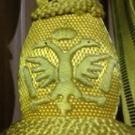



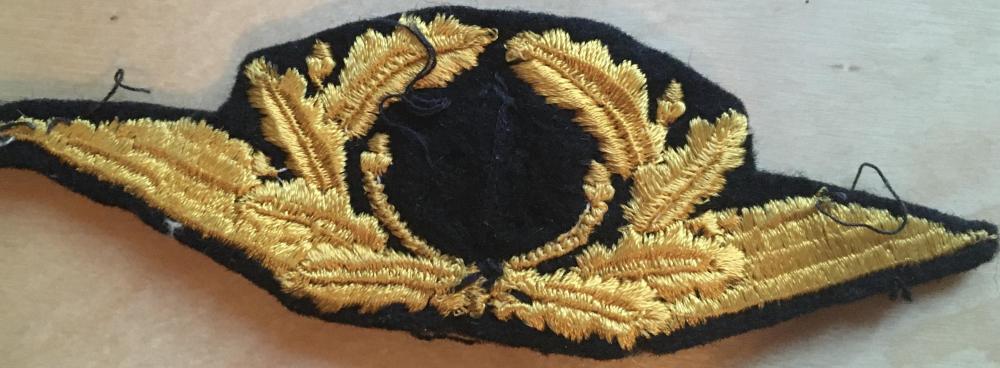
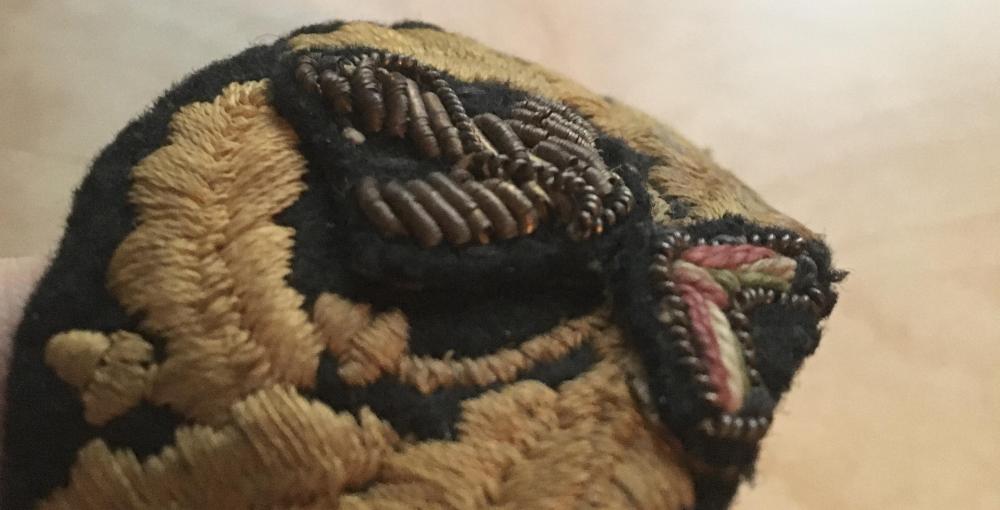

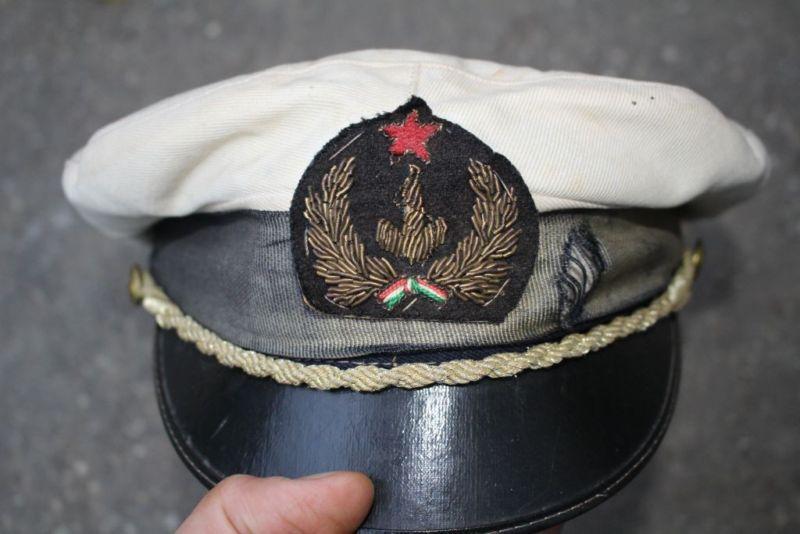


.thumb.jpg.6c643b34cc68b90f0a115053d7c46495.jpg)


